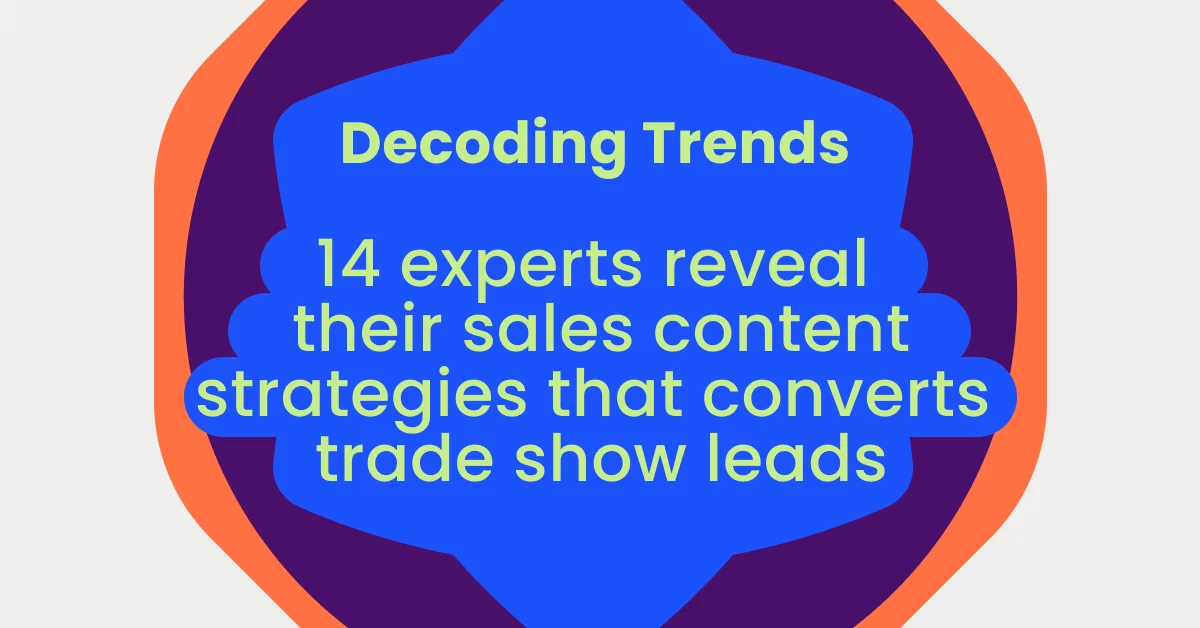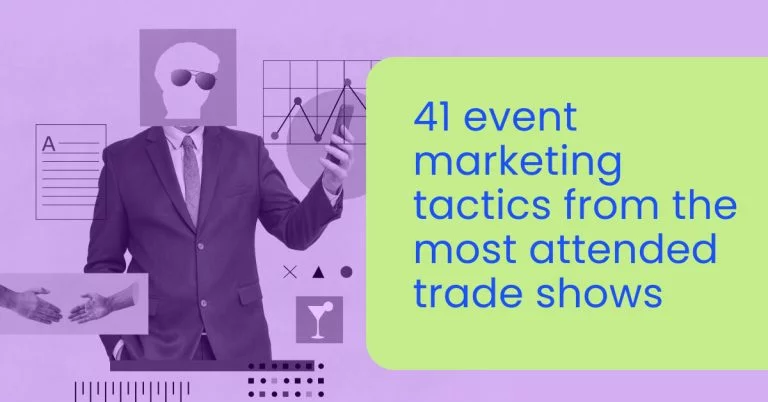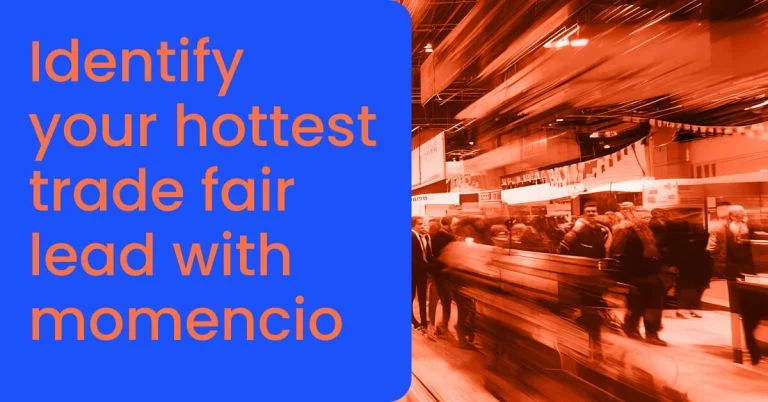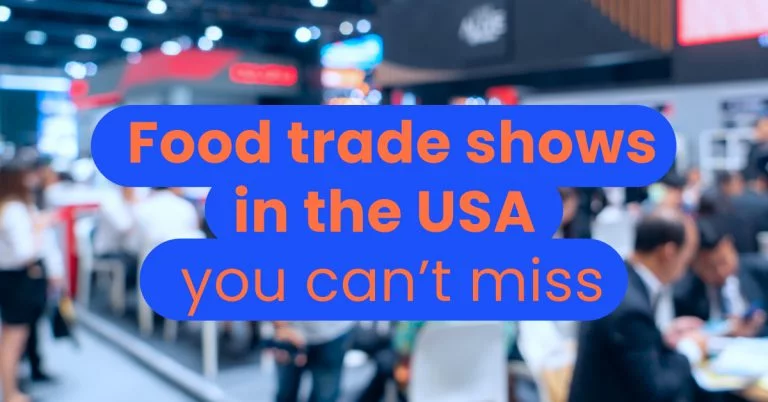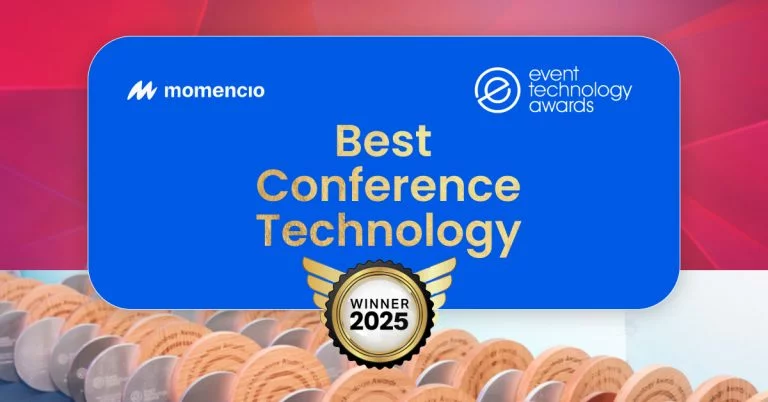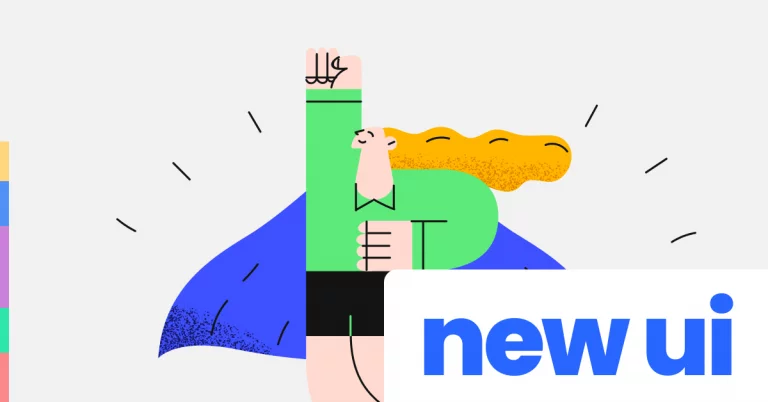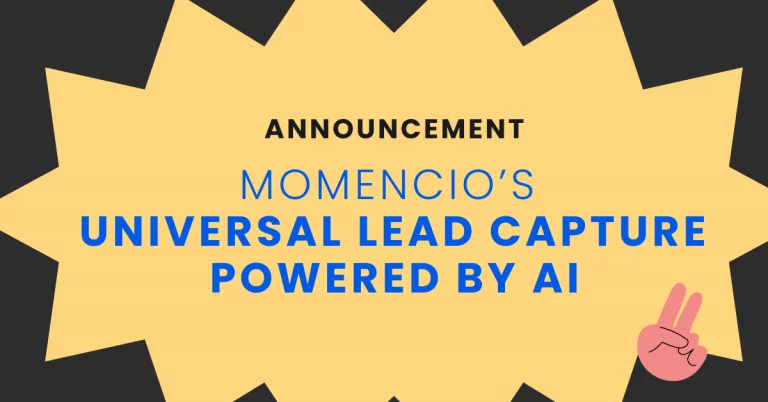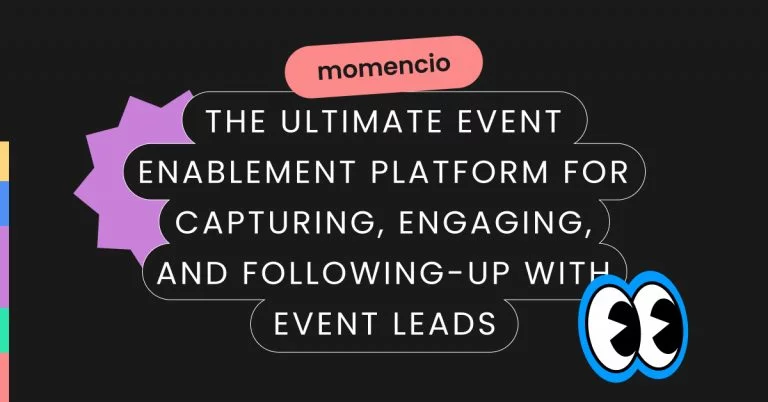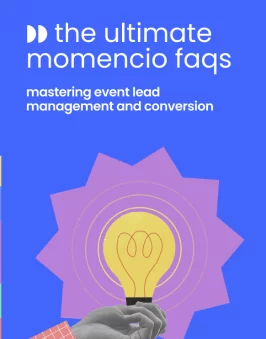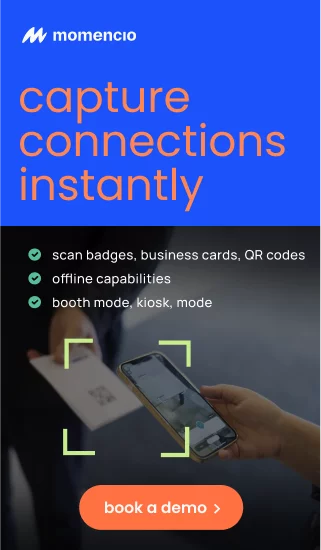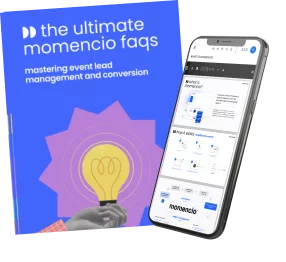Discover effective sales content strategies that can transform trade show leads into valuable meetings. This article presents insights from industry experts on how to maximize your conversion rates. Learn about proven tactics, from personalized emails to video testimonials, that address specific pain points and showcase real-world solutions.
What stands out across these approaches is how they connect directly back to the trade show floor. The strongest content is not abstract or generic, it builds on the exact conversation, concern, or spark of interest that happened at the booth. Today, event technology platforms make it easier for teams to capture those moments and carry them forward into the follow-up, ensuring that no lead slips through the cracks.
1. Franchisee success stories convert prospects
I’ve seen thousands of exhibitors try different approaches. The content that consistently converts best is what we call the “Franchisee Success Story One-Pager.”
Instead of sending generic brochures, our top-performing exhibitors follow up with a single-page story about a franchisee who mirrors the prospect’s background — same investment level, similar market size, comparable experience. For example, Supercuts’ VP Kurt Landwehr showed me how they feature a former teacher who now owns three locations and hit $180K profit in year two.
The key is specificity over salesiness. These one-pagers include exact revenue numbers, timeline to profitability, and one challenge the franchisee overcame with corporate support. Prospects can instantly visualize their own path to success rather than wondering, “Will this work for someone like me?”
What makes this especially powerful is timing — our exhibitors send these within 24 hours while the face-to-face connection is fresh. The personal story bridges the gap between the trade show conversation and that crucial first phone call.
Ted O’Shea, Tradeshow Event Manager, The Great American Franchise Expo
2. Industry-specific case studies showcase solutions
The sales content our team relies on the most after trade shows is a concise case study deck that shows how we have solved real shipping and logistics challenges. Unlike a standard brochure, the deck is tailored by industry vertical so that prospects immediately see examples relevant to them.
For instance, at a maritime exhibition in Dubai, we met a trading company that was unsure about switching freight partners. Within two days, we sent them a short case study showing how we reduced demurrage costs for a similar client by improving documentation accuracy. Because the content was specific and backed with results, the prospect agreed to a follow-up meeting with their operations head.
This approach works because it bridges the gap between interest and trust. Instead of generic marketing material, we give leads a story they can relate to, which makes the decision to continue the conversation much easier.
Mustafa Tailor, Business Development Manager, BASSAM
3. Video testimonials drive meeting commitments
Our sales team has a one-minute compilation video of customer testimonials, short enough to hold attention on a busy trade show floor but compelling enough to move the conversation from curiosity to commitment. Instead of us telling them why our product feels similar to an actual golf ball, prospects hear from real golfers themselves on how our ball flight looked and that it is similar to what they see on the course.
I remember a recent show in Orlando where we had thirty prospects stop by our booth within an hour. Twenty of them agreed to view the video on a small screen in the booth. Out of that group, fifteen agreed to set up follow-up calls on the spot. The testimonials were more persuasive than any sales pitch. There was a former coach who said we saved him over $500 a month in range fees while helping his grandson lower his score by six strokes. Stories like that give our team a foundation to move the discussion directly into value, which makes securing meetings a natural next step.
Katie Breaker, Director of Sales & Marketing, Birdieball
4. Personalized emails address specific pain points
The single most effective piece of sales content for converting trade show leads into meetings is a highly personalized follow-up email. This is not a generic blast to everyone who stopped by the booth. Instead, it is a far more targeted and thoughtful approach. This content works best when it’s crafted immediately after the show, while the interaction is still fresh in everyone’s mind. It should be a short, direct message that references a specific conversation or detail from the trade show. This simple act of remembering something personal makes a world of difference.
Here’s how we’ve seen this work successfully time and again. Imagine a sales representative had a quick chat with a prospect about their specific pain point related to supply chain issues. Instead of a standard “thanks for stopping by” email, the representative would send a follow-up that starts, “It was great to meet you at the show today and hear about the challenges you’re facing with your supply chain.” They might then attach a one-page case study or a link to a relevant blog post that directly addresses that specific challenge.
It’s a targeted solution, not a broad pitch. This approach shows the prospect that you were truly listening and that you can provide tangible value. It makes the interaction feel less like a sales pitch and more like a helpful resource, and that’s exactly what encourages people to agree to that next meeting.
Brandon Batchelor, Head of North American Sales and Strategic Partnerships, ReadyCloud
This echoes what momencio’s LiveMicrositeTM does: it builds a tailored microsite keyed to the exact conversation and content presented during conversation with the prospect. Reps don’t dig through notes—they deliver a seamless, personally relevant follow-up in real time.
5. Omnichannel campaigns boost conversion rates
The most effective sales content for our sales reps relies on personalized, omnichannel follow-ups. Outbound is still the fastest path to revenue, but only when it’s persistent and ICP-specific.
We recommend sales reps launch campaigns within hours of capturing trade show leads. For example, a brief email referencing your booth conversation and offering value, paired with a LinkedIn request mentioning the same topic, can help SDRs convert warm leads into meetings within 48 hours.
Pro tip: Reach out immediately. Combine email, LinkedIn, and calls and use AI automation to run personalized, omnichannel campaigns that actually convert. SDRs convert best when they own the sequence, not just the content.
Vito Vishnepolsky, Founder and Director, Martal Group
6. Sector-focused proof increases meeting requests
The one piece of sales content our team relies on most after trade shows is a short industry-specific case study booklet that highlights how our simulators solved a real operational problem for a client. Unlike generic brochures, these case studies are concise, visual, and tailored to the sector the lead belongs to.
For example, at a mining expo in Delhi, we met a company hesitant about investing in simulators. Within two days of the event, we shared a mining-specific case study that showed how one of our clients reduced fuel costs by 18% and cut accident rates in operator training. Because the numbers were real and tied to outcomes, the lead agreed to a follow-up meeting with their senior management.
We’ve seen this work across sectors: defense prospects respond strongly to case studies showing mission-readiness improvements, while aviation clients value examples tied to safety compliance. By replacing generic marketing with sector-focused proof, we make the trade show conversation feel immediately relevant, which increases our conversion from interest to meetings.
Abhay Hoogar, Sr. Manager – Business Development, Tecknotrove
7. On-site video follow-ups secure appointments
At trade shows, I use an after-event email a lot with a short video recorded by myself on-site. It is under two minutes, filmed right at the booth, and sent within 24 hours of meeting the prospect. The subject line contains their name and the event, which will increase open rates. Inside the video, I summarize what we discussed, put my face on there to keep the human connection alive, and share a screen for a brief period of time to show the PMP pass guarantee and class schedule. I always end with a simple call to action to a 15-minute discovery call.
This single piece of content has outperformed our regular follow-up emails every time. During PMI Global I applied this approach to 16 contacts. Nine scheduled a meeting within three days and five signed up for our next boot camp. That translated into $9,375 in proven revenue from one follow-up strategy. What makes this work is the speed, familiarity and personalization. People recall the face and the interaction. They are faster to respond as the message does not seem automated or scripted. It’s just me, following up the way people used to do before everything got so templated and impersonal. That makes a difference.
Yad Senapathy, Founder & CEO, Project Management Training Institute (PMTI)
8. Latency battle reports demonstrate real-world impact
Trade show leads are unpredictable, but one item I found always got us meetings: what we called a Latency Battle Report. Rather than simply distributing a technical sheet of AMD Ryzen builds or DDoS layers, we supplied short reports of actual ping drops in London, Frankfurt, and Singapore nodes during the peak evening hours.
A small indie developer at one expo in Birmingham grabbed the report and realized its worth in seconds. We noticed that with NVMe-backed builds, we’d cut the average latency in Singapore by one-third, so they sprang into action and set up a meeting as their player base was complaining of lag. The result? In two weeks, they migrated test servers to our platform, and in two months, they expanded into a full multi-region contract.
The effectiveness of this content is easy to explain: it appeals to the pain points that developers experience during actual matches and not just technical promises. All the other people at a booth may have gleaming rigs, but when a studio director sees that a rival had more polished matches and greater uptime, it is hard to ignore.
Eventually, that barebones latency report was the single document that never got thrown out after the event, because it directly connected our infrastructure to their gaming experience as a community.
Hone John Tito, Co-founder, Game Host Bros
9. Before-and-after portfolios showcase transformations
The most effective piece of sales content we use isn’t a glossy brochure or a slide deck; it’s our portfolio of completed custom projects with before-and-after imagery. Prospects at trade shows don’t want hypotheticals; they want proof that their bold ideas can actually be built. By showing how we transformed reclaimed stone into luxury facades or outdoor living spaces, we shift the conversation from “what we sell” to “what they can achieve.”
One example: after a major design expo, a high-end builder in Texas received our case study packet featuring a Malibu estate where reclaimed French limestone was reimagined for a modern residence. That single packet led to an on-site meeting, then a $400,000 contract. The difference lies in the specificity of detailed images, context on regional climate impact, and testimonials from architects. These carry far more weight than generic marketing collateral. This approach repeatedly outperforms traditional sales content because it demonstrates vision realized, not just promised.
Erwin Gutenkunst, President and Owner, Neolithic Materials
10. Post-event one-pagers highlight relevant solutions
In my experience, the one piece of sales content representatives rely on most to convert trade show leads into meetings is a personalized “post-event one-pager” (or digital leave-behind).
Why it works:
- Contextual hook – It references the trade show where you met, so it feels relevant and timely.
- Value-first – Instead of being a generic brochure, it quickly highlights how your solution solves the pain point that the attendee likely mentioned at the booth.
- Easy to skim – Visual, one-page format (PDF, landing page, or interactive deck).
Example:
At one SaaS company I worked with, representatives used a customized one-pager after CES. Each lead received a follow-up email like:
“Hi [Name], great chatting with you at CES about [their challenge]. I thought I’d send you this quick overview showing how companies in [their industry] are solving that exact issue with . Let’s explore how this could fit into your workflow.”
The one-pager had:
- A short problem-solution breakdown
- 1-2 quick case study statistics from a similar customer
- A QR code/link to book a meeting instantly
Result: Instead of the usual 5-8% meeting conversion rate after trade shows, these one-pagers drove 20%+ meeting conversion because they connected the event, the conversation, and the value in a single, lightweight asset.
Syed Sazzadul Bari, Chief Marketing Officer (CMO), Cure VPN
11. Use case digests connect solutions to verticals
The most powerful sales document that our representatives use after a trade show is a short, customized use case digest. This is a one-page PDF that connects our solution to the prospect’s likely vertical and includes ROI metrics of clients doing something similar to the prospect. It focuses on a specific pain point that the lead should have discussed at the booth. Our sales team inputs notes into our CRM.
For instance, at CES, a representative spoke to a retail tech lead who was struggling with low digital adoption in their stores. Within 48 hours, we followed up with the lead, providing a digest highlighting information about a similar retailer. This retailer was able to increase adoption by 42 percent in three months using our mobile enablement suite. We even included a quote from the CIO of that client.
This use case digest format is effective because it is not generic collateral. It feels like an insight rather than a sales pitch (demonstrating relevance, swiftness, and business acumen — traits that are difficult to convey through a follow-up email, phone call, etc.). We found that this type of digest content books meetings more effectively than other standard decks or brochures by a margin greater than 35% when sent within three days of an event.
Gianluca Ferruggia, General Manager, DesignRush
12. 30-second transformation videos spark emotional attachment
The most effective selling aid we have is not the conventional sales collateral — it is our 30-Second Transformation Video, which demonstrates a customer photo that turns into a personal superhero paint kit in real-time.
The question always remains the same at every trade show: prospects want to know how this actually works. Instead of describing our AI process, our reps pull out tablets with these micro-transformation videos. We have developed versions featuring various personas such as business owners as CEOs in boardrooms, families as superhero teams, and couples in fantasy scenarios.
The magic occurs when prospects see themselves as part of the transformation. This piece of content alone at our last large craft expo drove 73 percent of our qualified meeting requests. I was informed by one of our reps that a corporate buyer watched her photograph turn into a Wonder Woman paint kit three times and immediately scheduled a bulk order consultation.
The instant emotional attachment is key to making it work. People purchase the feeling of seeing themselves as their ideal version, not just the custom paint kits. The video produces such an “I need this” moment that the intent to purchase becomes real within a few seconds.
Jacob Elban, Creative Strategist, Davincified
13. Installation videos prove efficiency and expertise
The best-performing content, by far, is a 90-second video of an actual installation or repair from beginning to end. It features our technicians at work and takes the prospect through what was wrong and how we remedied it. The video is sent the same day as the visit to our booth, along with a brief note. When prospects see a real customer’s garage fixed and operational in less than two hours, the impact is far greater than any brochure. It’s clean, simple, and FAST.
The single video increased our follow-up conversion rate by more than 40 percent within the first three months of implementation. The leads that were “iffy” at the booth called and set up meetings after receiving the video. Seeing the work we do in action is all the “sales” presentation they need. It’s PROOF, and that is what closes deals, without the need for further explanation. We send the email or text, depending on the preference the individual stated at the booth, and the open rate is very high.
Craig Focht, Cofounder & CEO, All Pro Door Repair
14. ICT response packs address compliance concerns
The one item of sales content which has always provided a casual conversation to a booked meeting is our Ofsted ICT Response Pack, which we created as we saw how pressured headteachers feel about Ofsted inspections. It is not a glossy brochure but a simple, no-frills guide that describes how ICT strategy connects with inspection frameworks and it has two examples of real schools.
The first time we tested it out at the BETT show, that is what happened: a deputy head browsed through it, saw the same gaps as in her own school, and promptly requested a follow-up meeting. In a matter of days, we had a meeting with her senior staff and out of this meeting came a three-year ICT support contract.
The rationale behind this is that it appeals to the stress point of compliance in a manner that most vendors are not addressing at trade shows, where it is all about price or hardware specifications. Our ability to demonstrate that we were familiar with the inspection angle and had translated ICT procurement into a real school setting made us a practical partner as opposed to another vendor.
Trade show leads are cold when they receive a batch of generic leaflets to take home, but when you present them with something that reflects discussions they are having with governors and inspectors, it becomes the one thing they keep on their desk. And there, conversion starts.
Mark Friend, Company Director, Classroom365
Live engagement signals guide timing
A theme that cuts across all sixteen expert strategies is the importance of speed and personalization. Generic collateral rarely moves the needle; content that connects back to the exact conversation at the booth does. The difference lies in capturing that context quickly and carrying it forward into the follow-up.
This is where event tools for the new age have changed the process. Instead of sending static PDFs, reps can generate dynamic microsites that reflect the specific discussion they just had. Because these microsites are updateable and track engagement, they stay relevant long after the show floor has closed.
Data intelligence adds another layer. When lead records are enriched and cleaned automatically, the follow-up content can be shaped around a fuller picture of the person and their company. And with live engagement feeds showing which assets a lead has viewed or revisited, sales teams can time their outreach to when interest is strongest.
By combining context capture, tailored content, and live engagement signals, exhibitors can apply every one of the strategies above with greater precision. In a landscape crowded with pitches, that level of attentiveness is often what earns the meeting.
Turn your next trade show into a pipeline engine. See how momencio equips field marketers with AI EdgeCapture, LiveMicrosite, AI IntelliSense, IntelliStream and more.
